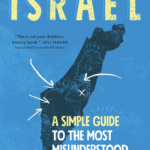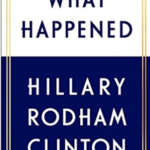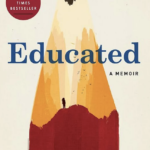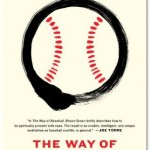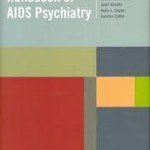The Spinoza Problem: A Novel by Irvin D. Yalom
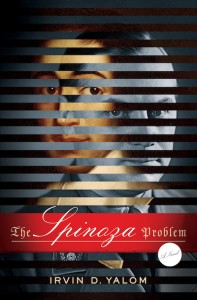 The Spinoza Problem: A Novel: by Irvin D. Yalom– Irvin Yalom is a prominent psychiatrist who is now Professor Emeritus at Stanford Medical School He is a well published author who is known for his outstanding books on group therapy. He also has written books about case histories and relationships, which have been very well received by the public including Love’s Executioner and Staring At the Sun, which addresses death and dying. In addition he has authored a few novels including When Nietzsche Wept and this latest book published in February 2012, The Spinoza Problem.
The Spinoza Problem: A Novel: by Irvin D. Yalom– Irvin Yalom is a prominent psychiatrist who is now Professor Emeritus at Stanford Medical School He is a well published author who is known for his outstanding books on group therapy. He also has written books about case histories and relationships, which have been very well received by the public including Love’s Executioner and Staring At the Sun, which addresses death and dying. In addition he has authored a few novels including When Nietzsche Wept and this latest book published in February 2012, The Spinoza Problem.
This very readable novel will be particularly engrossing to those who have some acquaintance with the philosophy of Spinoza or have chosen to put aside any literal understanding of the bible and question the traditional belief in God. It also will have great appeal to readers who are always drawn to trying to get further insight into how anti-Semitism and Hitler were able to flourish in post World War I Germany leading to the rise of Nazism and World War II.
Yalom acknowledges that he always had been fascinated with Spinoza but could never find a way to write about him since very little was known about his personal and inner life. In the foreword of this book he describes a circumstance, which stimulated an idea, which then allowed him to imagine this novel.
The story starts off by introducing the reader to Baruch Spinoza (nicknamed Benito), a brilliant Talmudic student in Holland and Alfred Rosenberg a student in Germany who runs for President of his College class by making an anti-Semitic speech which gets him called on the carpet by two of the faculty, one of whom is Jewish. Each chapter alternates by following the lives of one of these two young men. Spinoza who lived in the 17th century in Holland becomes ex-communicated by his well-known Rabbi because of his heretic views of the bible and his refusal to accept a belief in God, rejecting both ideas as superstitions. Rosenberg lives in the 20th century and experiences the aftermath of Germany’s humiliating defeat in World War I, becomes a writer and an editor, meets a young Adolph Hitler whom he idolizes and ultimately serves. Although they lived nearly 300 years apart, their connection through Spinoza’s writings resulted in nagging questions which Rosenberg pondered most of his life. These may have unconsciously challenged his deeply held anti-Semitic beliefs. On another level the examination of Spinoza’s deconstruction of a religion based philosophy founded on myths and superstitions highlights the flaws of the deeply held views of Hitler and so many of his followers.
Yalom offers this book as completely factual except for the personal life and inner thoughts of each of the protagonists and the connection that he imagines between the two. There are however some reasons that Yalom has for believing that Rosenberg could have been bothered by the problem that some earlier great German minds valued the writings of “Spinoza the Jew.” The real lives of both men are well known. This includes the details of the ex-communication of Spinoza from his Jewish community and the actual writings of Spinoza. Rosenberg’s life and ultimate death by hanging as a war criminal have been well documented and his views were widely disseminated, as he was an editor of a prominent Nazi newspaper as well as holding other important positions under Hitler.
There are records that show that Rosenberg did spend some time hospitalized in a Psychiatric Clinic during his Nazi years. Yalom creates therapy sessions between Rosenberg and a made up German psychiatrist who is not sympathetic to his vision. Yalom obviously does this, as he imagined the method in which he would approach Rosenberg if he were his psychiatrist.
Another made up character is Franco who is depicted as a friend and follower of Spinoza, who believes that Judaism should be changed from the inside rather than completely discarded in place of a new philosophical view of God as Nature, which was Spinoza’s view. This character becomes a Rabbi and plans to leave Europe and come to the New World and found a new religion. In the epilog of the book Yalom suggests that he was making a reference to Mordecai Kaplan a 20th century pioneer of modernized and secularized Judaism known as the Reconstruction movement in the U.S. (although Kaplan’s trajectory was somewhat different than the character in the book).
Also in the epilog of the book Yalom quotes the wisdom that, History is fiction that happens. Fiction is history that might have happened.
This novel successfully weaves the two together in a stimulating, thought provoking and quite enjoyable novel.
Category: FH - Fiction Historical | Tags: Aldolf Hitler, Alfred Rosenberg, anti-Semetism, BookRap, Germany, Irvin D. Yalom, Jews, Michael Blumenfield, Mordecai Kaplan, religion, Spinoza, The Spinoza Problem Comment »



